Vegetables will grow even in January! Options for heating polycarbonate greenhouses in winter
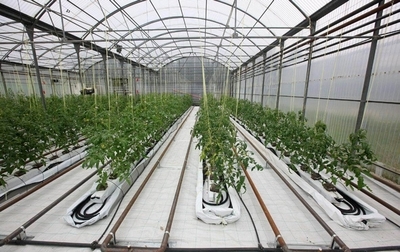
Greenhouses made of cellular polycarbonate protect vegetables and seedlings well from adverse weather conditions. This the material consists of two layers, separated by vertical stiffening ribs.
There is an air gap between the layers. The cellular structure gives the plastic high heat-insulating properties. Heating devices make it possible to use such a greenhouse all year round.
Heating a polycarbonate greenhouse in winter
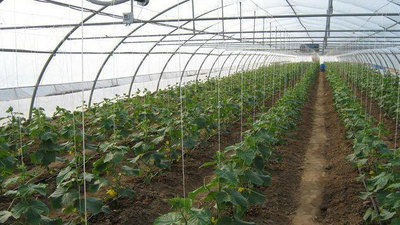
During the cold months, plants lack the heat retained by the polymer material. At low temperatures, greenhouse buildings require artificial heating. For heating use:
- solar energy;
- furnaces and boilers of various designs;
- electrical appliances;
- ground heating systems;
- air and water heating.
Solar energy
Long-wave radiation from the sun heats the greenhouse body, increasing the air temperature inside it. In the cold season, thermal energy is accumulated using solar collectors. These devices have different sizes and design features.
How to set up
In the solar collector, infrared radiation is converted into thermal radiation. To achieve maximum effect make preliminary adjustments to the solar heating.
- The collector planes are oriented to the south.
- Solar panels are installed vertically or at an angle to the horizon (the angle of inclination is numerically equal to the geographic latitude of the area).
- Collectors are installed away from tall trees and house walls so that shadows do not fall on them.
Vertical arrangement The collector has a number of advantages. If the adsorber plane is perpendicular to the ground, snow, autumn leaves and debris do not accumulate on it.
Features of solar heating
Factory-made solar collectors, designed exclusively for heating water in the system, make flat and vacuum. The heat exchanger of the device transfers heat to a single- or dual-circuit coolant circulation system.
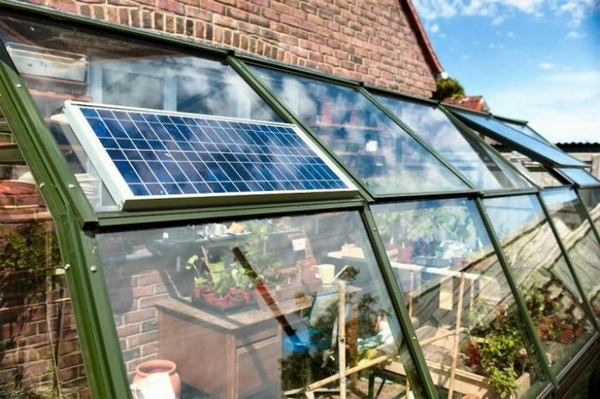
Photo 1. Solar collector installed on the roof of a greenhouse. Usually used as an additional source of heating.
- Flat consist of an adsorber that absorbs infrared radiation, transparent glass and a heat-insulating layer.
- Vacuum consist of a battery of thermos tubes, inside which there are metal tubes that receive heat and transfer it to the coolant.
Homemade collectors are boxes that contain Corrugated black steel sheet. The surface of the box is covered with transparent glass. Several pipes are mounted in the body of the device. Air flows by gravity into the box, heats up and exits into the greenhouse building. The air flow circulates naturally, without the help of a fan.
Pros from using solar collectors are the quick payback of these structures, the reliability of the structures and the long service life (18-20 years old). These devices use free solar energy and heat the coolant up to 40-60 °C.
Cons solar collectors are their low efficiency in short daylight hours, constant cloudiness and low air temperatures. Heating system pipes coming from the collectors need to be insulated to reduce heat loss during water transportation. This leads to additional costs.
Important! At air temperature minus 15 °C and below the operation of solar collectors ineffective.
Potbelly stove and other metal stoves
Stove heating is used to heat small and medium-sized polycarbonate greenhouses. Potbelly stoves and other metal stoves (factory-made and homemade) are suitable for this purpose.
Heating is produced by the heat emitted from the iron body during combustion of wood and other solid fuel. For heating small and medium greenhouses Suitable:
- conventional ovens;
- stoves with a long-burning fuel system.

Photo 2. Heating a greenhouse with a solid fuel stove. It is necessary to constantly monitor the availability of fuel.
Features of stove heating
Long-burning stoves have nozzles that allow air to be supplied to the middle and upper parts of the body, causing the combustible material to slowly smolder. A potbelly stove with a simple firebox quickly heats up a greenhouse, a long-burning stove generates less heat and releases it for a long time.
Pros The advantages of using furnaces include the ease of maintenance of these devices and the low cost of fuel.
- The metal stove is easy to dismantle and take out of the greenhouse in the summer.
- You can make a potbelly stove and similar devices yourself.
- Any solid fuel burns in metal heaters.
- Long burning stoves burn fuel within 5-8 hours.
Cons heating with iron stoves lies in the peculiarities of the operation of these devices.
- The fuel in a regular stove burns quickly and the greenhouse cools down. in a couple of hours.
- With this type of heating, the soil temperature remains low.
- The greenhouse structure heats up unevenly, especially in severe cold weather.
- Heat is concentrated mainly under the ceiling and in the middle air layer.
- A large area of the greenhouse is allocated for the iron stove.
- The chimney needs cleaning 2-3 times during the winter, The ash pan is cleaned daily.
Air
Greenhouses of any size (including giant industrial ones) are heated warm air currentsThis type of heating is used to heat year-round and seasonal greenhouses.
Features of air heating
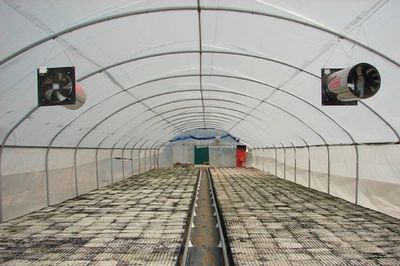
To heat the air, they are used heating and ventilation generators heat. These are gas or solid fuel boilers to which air ducts are connected.
Generators are installed on a foundation or on special supports. The air is heated from the generator heat exchanger to a temperature 50—60 °C, at the outlet of the pipes the temperature of the air mass is 15—25 °C.
The air flow enters the greenhouse through pipes and comes out evenly through special holes. Having given off heat, the air returns to the boiler for heating.
Reference. There are three air circulation systems - recirculation, partial circulation and direct flow.
Pros air heating consists of the ability to heat greenhouses with large areas and high air heating speed.
- For greenhouses built in regions with a mild climate, only air heating is sufficient. Circulation ensures uniform heating of the entire room.
- The air flow carries away water condensation from the walls of the greenhouse.
- The equipment (heat generator and air ducts) is cheaper than water pipes.
Cons air heating - high cost and complexity of gas equipment, specialists are invited to install the heating and ventilation generator. Electricity is used to operate the fans that pump air.
Water
This method is effective for winter growing of vegetables. Water heating system warms the air and soil during the most severe frosts.
Features of water heating
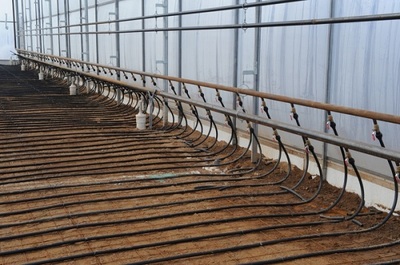
They are installing it in the greenhouse building boiler (solid fuel, gas) or homemade stove with built-in tank, connected to the heating pipe system.
The water passes through a closed circuit, enters the pipes and radiators, cools down and returns to the heat generator.
Pipes are being laid in the middle of the greenhouse height or at floor level. Water circulation occurs naturally or is forced by a pump. A chimney is built to remove flue gases.
Instead of radiators, they are often used large diameter pipes, which give off heat long and evenly.
Pros water heating:
- uniform heating of the greenhouse;
- reliability and durability of the system;
- in solid fuel boilers and furnaces - the ability to burn any organic fuel.
Cons water heating:
- deposited in steel pipes calcium carbonate;
- metal parts and pipes are subject to corrosion;
- the need for periodic water addition;
- the risk of pipes bursting when water overheats and boils in the heating system;
- solid fuel boilers are stopped for cleaning 2-3 times a week;
- the chimney needs cleaning several times a year.
Attention! To combat corrosion and scale, it is recommended to use plastic pipes and aluminum radiators.
Warm beds
Heating greenhouse beds from the inside allows you to get high-quality seedlings. To heat the soil under the beds, place electric cable And pipes through which warm water circulates.
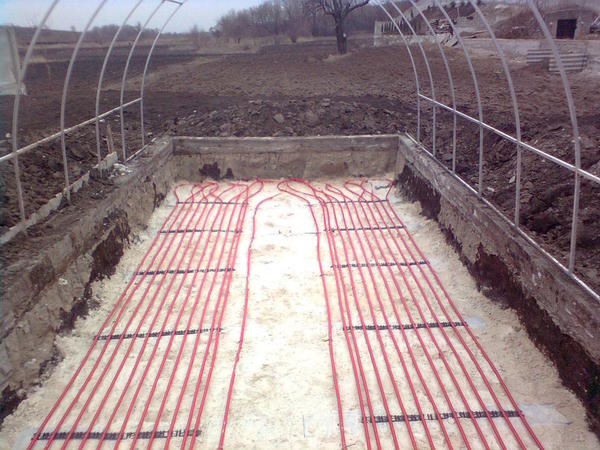
Photo 3. Laying warm water beds in a greenhouse. Special pipes are installed through which the hot heat carrier flows.
Heating the soil with a cable - features of the method
The soil is heated with a special electric cable (for example, Green Agro), which is reinforced with a metal mesh and covered with plastic. The cable is laid in a sand cushion covered with mesh (laying depth - 40 cm). The heating is controlled by the thermostat remote control, the electricity is turned off as soon as the temperature reaches 25 °C.
Reference. In the "Warm floor" system, the heating cable is laid over the entire area of the greenhouse.
Pros This method of soil heating consists in creating a stable comfortable temperature for the root system. The combination of soil and air heating creates ideal conditions for winter and early vegetation.
Cons using cable - complexity of installation, high cost of equipment, need to involve specialists and labor, high power consumption during continuous operation of the system. When the power is turned off in winter, plants may die. Rats and moles sometimes gnaw through the cable.
Features of heating beds from the inside with water pipes
To warm the soil, they lay plastic, ceramic or copper pipes, coming from the general heating system. The pipes are buried by 25 cm or carried out under the shelves on which the beds are located.
Water for heating the soil comes from a solid fuel, gas, electric boiler. The temperature of the coolant is set from the thermostat control panel, since it should not exceed 25 °C. Water circulation in the pipes is forced.
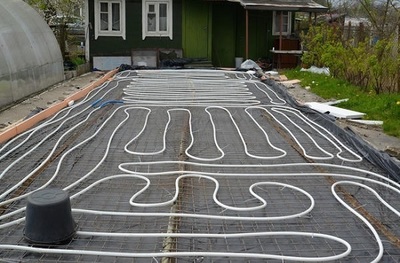
Pros Heating the beds with warm pipes consists of uniform heating of the soil.
In case of using a gas and solid fuel boiler, the system does not depend on power outages on the site. Heating installation is not complicated, you can lay the pipes yourself.
Cons This method of heating is that it is impossible to use metal pipes, as they will quickly rust. Plastic water pipes are often damaged by moles and other animals. The heating system must be equipped with a thermostat, so only complex, expensive heating boilers can be used.
Electrical appliances
Electric heaters are used to heat greenhouses. heaters and infrared heaters. Less often used for heating convectors and household fan heaters.
IR heaters: features of operation in greenhouses
Rays of infrared lamps like sunlight. The radiation generated by the operating device heats the soil and the plants themselves. Heaters or IR film are placed under the ceiling of the greenhouse building. Long-wave infrared emitters are more often used for greenhouses. This type of heating is used if the outside air temperature does not drop to extreme values.
Infrared heaters work not only from electricity, but also from gas.
Pros infrared devices consist of selective heating (solid surfaces that give off heat to the air are heated). These devices quickly and evenly heat greenhouse structures, they are reliable and durable. IR heaters do not dry the air, do not create noise, do not burn oxygen.
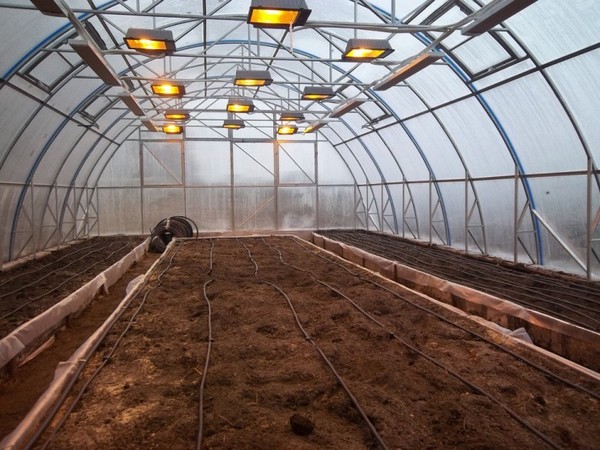
Photo 4. Infrared heaters in a greenhouse. The devices are installed under the roof along the entire perimeter of the greenhouse.
On the downside This type of heating includes the high cost of the devices, the dependence of heating on a continuous power supply. The back side of the lamps gets very hot, which forces the use of special fasteners that keep the lamps away from flammable materials.
Electric heaters for greenhouses: features of use
Electric heaters have different power and sizes. Large units with fans are used to heat greenhouses. The heating elements of these devices are hidden under the casing, the devices are equipped with thermostats and operate in two modes. The heaters operate from a household network with voltage of 220 or 380 voltsStationary devices are placed in a specially made opening; durable stands are made for mobile heaters.
Pros heating with a heater: warm air with the help of a fan evenly washes the greenhouse building, the device operates in automatic mode, does not produce harmful emissions and fumes. The device has a high efficiency, quickly heats the air and beds on the shelves.
Cons: when the power goes out, the temperature drops quickly. The beds made in the ground hardly warm up. With continuous use of the device, the electricity costs will be significant.
Useful video
Watch a video that talks about a DIY greenhouse water heating system.
Ventilation of a heated greenhouse
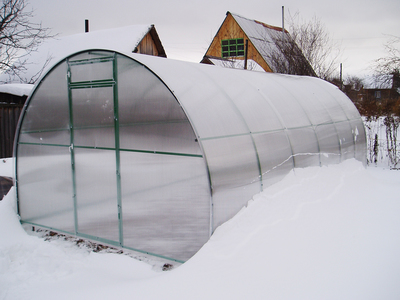
The greenhouse building is periodically ventilated natural or forced method. This is done through transoms, casements, and open doors.
An exhaust ventilation system is installed to ensure forced air circulation.
Excessive moisture activates fungi and bacteria in the soil. Ventilation removes moisture that plants evaporate and water vapor that rises into the air after watering. When ventilating the high temperature decreases and oxygen reserves are restored, consumed during combustion of solid fuel and gas.








Comments
I was in Israel and watched in their kibbutzim how they make greenhouses. Of course, the climate there is different, it is warm all year round. But you can use drip irrigation as a basis when installing heating in greenhouses. I have pipes with holes, they release water from the pressure. Hot water cools down in the ground. Plants grow very well.